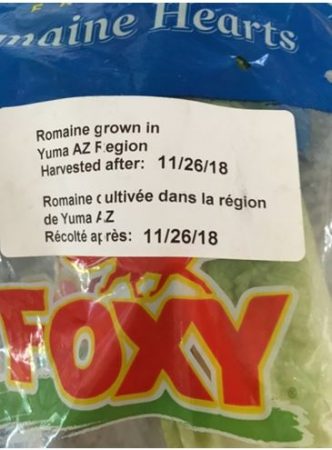Update related to the romaine lettuce E. coli O157:H7 outbreak investigation
 Today (13 December 2018), the FDA announced that they have identified the outbreak strain in the sediment of a local irrigation reservoir used by a single farm owned and operated by Adam Bros. Farms in Santa Barbara county farms.
Today (13 December 2018), the FDA announced that they have identified the outbreak strain in the sediment of a local irrigation reservoir used by a single farm owned and operated by Adam Bros. Farms in Santa Barbara county farms.
However, this finding doesn’t explain all illnesses. The FDA traceback suggests that additional romaine lettuce shipped from other farms could also likely be implicated in the outbreak. Therefore, the water from the reservoir on this single farm doesn’t fully explain what the common source of the contamination.
As of Dec. 13, our investigation yielded records from five restaurants in four different states that have identified 11 different distributors, nine different growers, and eight different farms as potential sources of contaminated romaine lettuce.
Base on their findings, and the time elapsed since the outbreak, the FDA announced that consumers can eat romaine lettuce from San Luis Obispo, Santa Cruz, and Ventura Counties, in California, provided it was harvested after Nov. 23.

Romaine lettuce that was harvested outside of Monterey, San Benito, and Santa Barbara Counties in California after Nov. 23 doesn’t appear to be related to the current outbreak. Hydroponically- and greenhouse-grown romaine also doesn’t appear to be related to the current outbreak. There’s no reason for consumers or retailers to avoid using romaine harvested from these sources.
As of Dec. 13, this outbreak has resulted in 59 people becoming ill in 15 states, with the last reported illness onset date being Nov. 16.
